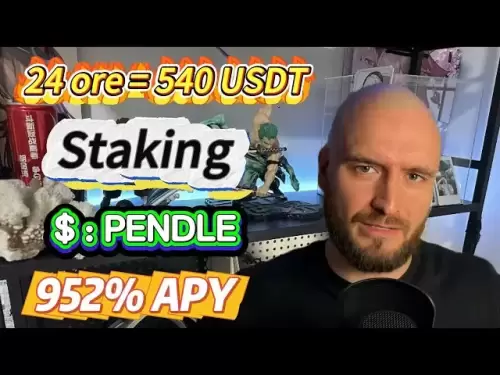-
 Bitcoin
Bitcoin $108,165.4587
0.78% -
 Ethereum
Ethereum $2,456.3517
1.15% -
 Tether USDt
Tether USDt $1.0003
0.00% -
 XRP
XRP $2.1934
0.05% -
 BNB
BNB $650.0935
0.52% -
 Solana
Solana $151.3905
2.69% -
 USDC
USDC $0.9998
0.00% -
 TRON
TRON $0.2751
-0.32% -
 Dogecoin
Dogecoin $0.1640
0.87% -
 Cardano
Cardano $0.5631
0.57% -
 Hyperliquid
Hyperliquid $38.7115
4.69% -
 Bitcoin Cash
Bitcoin Cash $493.1868
-0.39% -
 Sui
Sui $2.8217
3.61% -
 Chainlink
Chainlink $13.3994
2.08% -
 UNUS SED LEO
UNUS SED LEO $9.1632
0.94% -
 Avalanche
Avalanche $18.0318
1.97% -
 Stellar
Stellar $0.2388
0.35% -
 Toncoin
Toncoin $2.8763
1.41% -
 Shiba Inu
Shiba Inu $0.0...01160
1.59% -
 Litecoin
Litecoin $86.6393
1.29% -
 Hedera
Hedera $0.1485
0.16% -
 Monero
Monero $315.7948
1.56% -
 Polkadot
Polkadot $3.4240
1.88% -
 Bitget Token
Bitget Token $4.6314
-0.44% -
 Dai
Dai $0.9998
-0.01% -
 Ethena USDe
Ethena USDe $1.0002
-0.01% -
 Uniswap
Uniswap $7.2110
2.59% -
 Aave
Aave $270.6087
6.07% -
 Pi
Pi $0.5350
0.52% -
 Pepe
Pepe $0.0...09545
1.26%
How to use quantitative strategy trading on OKX
OKX offers robust tools like APIs and TradingView integration for quantitative trading, enabling automation, backtesting, and multi-asset strategies.
Apr 03, 2025 at 12:21 am
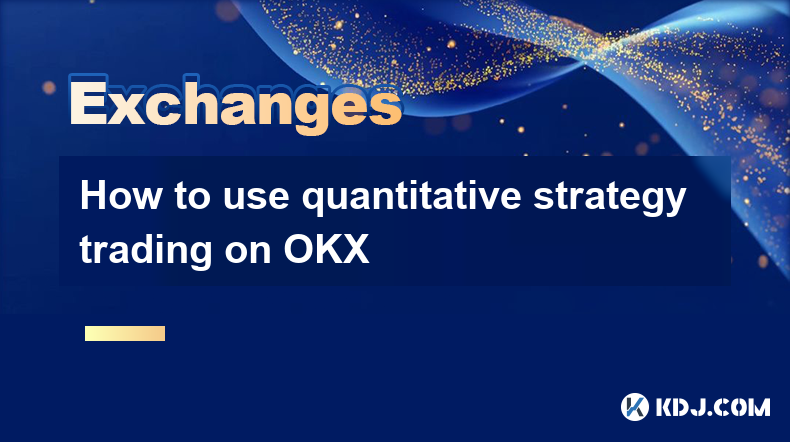
Quantitative strategy trading, often referred to as algo trading or automated trading, leverages mathematical models and algorithms to make trading decisions. OKX, a leading cryptocurrency exchange, offers robust tools and APIs that can be utilized to implement such strategies. This article will guide you through the process of setting up and executing quantitative trading strategies on OKX, from understanding the basics to advanced implementation.
Understanding Quantitative Trading
Quantitative trading involves using statistical and mathematical models to identify trading opportunities. These models can be based on various factors such as price movements, volume, and other market indicators. On OKX, traders can use these models to automate their trading activities, reducing the need for manual intervention and potentially increasing efficiency and profitability.
Benefits of Quantitative Trading on OKX
- Automation: Reduces the need for constant monitoring and manual trading.
- Speed: Executes trades faster than manual trading, which can be crucial in volatile markets.
- Backtesting: Allows traders to test strategies against historical data before risking real capital.
- Diversification: Enables trading across multiple assets and markets simultaneously.
Setting Up Your OKX Account for Quantitative Trading
Before you can start using quantitative strategies on OKX, you need to set up your account appropriately. This involves several key steps that ensure you have the necessary permissions and tools to execute your strategies effectively.
Steps to Set Up Your OKX Account
- Register and Verify: Sign up for an OKX account and complete the KYC verification process to access full trading features.
- Enable API Access: Navigate to the API Management section in your OKX account settings and create a new API key. Ensure you set the appropriate permissions for your trading needs.
- Secure Your API Keys: Store your API keys securely, as they grant access to your account. Use a secure method like a password manager or a hardware wallet.
- Configure Trading Parameters: Set up your trading parameters, such as leverage, margin, and trading pairs, according to your strategy requirements.
Developing Your Quantitative Trading Strategy
Once your OKX account is set up, the next step is to develop your quantitative trading strategy. This involves defining the rules and algorithms that will guide your trading decisions. Here's how you can approach this:
Key Components of a Quantitative Strategy
- Data Collection: Gather historical and real-time market data from OKX's API. This data will be the foundation of your strategy.
- Model Development: Create mathematical models that predict market movements based on the data. This could involve statistical analysis, machine learning, or other quantitative methods.
- Backtesting: Test your model against historical data to see how it would have performed. OKX provides historical data through its API, which you can use for this purpose.
- Optimization: Fine-tune your model to improve its performance. This might involve adjusting parameters or incorporating new data sources.
Implementing Your Strategy on OKX
With your strategy developed and backtested, it's time to implement it on OKX. This involves writing code that interacts with OKX's API to execute trades based on your strategy's rules.
Steps to Implement Your Strategy on OKX
- Choose a Programming Language: Select a language that you're comfortable with and that is supported by OKX's API, such as Python or JavaScript.
- Write the Code: Develop a script that uses OKX's API to fetch data, make trading decisions based on your model, and execute trades. Ensure your code includes error handling and logging.
- Test in a Sandbox Environment: Before deploying your strategy with real money, test it in a simulated environment to ensure it works as expected.
- Deploy and Monitor: Once you're confident in your strategy, deploy it on OKX and monitor its performance. Be prepared to make adjustments as market conditions change.
Using OKX's Tools and Features for Quantitative Trading
OKX offers several tools and features that can enhance your quantitative trading experience. Understanding and utilizing these can give you an edge in the market.
Key OKX Features for Quantitative Traders
- API: OKX's API allows for real-time data retrieval and trade execution, essential for quantitative strategies.
- TradingView Integration: OKX integrates with TradingView, allowing you to use its charting and analysis tools to develop and test strategies.
- Margin Trading: OKX offers margin trading, which can be used to amplify the returns of your quantitative strategies.
- Futures and Options: Access to futures and options markets on OKX can provide additional opportunities for quantitative trading.
Advanced Techniques in Quantitative Trading on OKX
As you become more comfortable with quantitative trading on OKX, you can explore more advanced techniques to further refine your strategies.
Advanced Quantitative Trading Techniques
- Machine Learning: Incorporate machine learning algorithms to predict market movements more accurately. OKX's API can provide the data needed to train these models.
- High-Frequency Trading: Use OKX's fast API to execute trades at high frequencies, taking advantage of small price movements.
- Risk Management: Implement advanced risk management techniques, such as stop-loss orders and position sizing, to protect your capital.
- Multi-Asset Strategies: Develop strategies that trade across multiple assets and markets available on OKX, diversifying your exposure and potential returns.
Monitoring and Adjusting Your Strategy
Quantitative trading is not a set-and-forget process. Continuous monitoring and adjustment are crucial to maintaining the effectiveness of your strategy.
Tips for Monitoring and Adjusting Your Strategy
- Regular Performance Review: Periodically review your strategy's performance to identify areas for improvement.
- Market Condition Analysis: Stay informed about market conditions and adjust your strategy accordingly. OKX's market data can help with this analysis.
- Strategy Refinement: Continuously refine your strategy based on new data and insights. This might involve tweaking your model or incorporating new indicators.
- Risk Management: Always keep an eye on your risk exposure and adjust your strategy to manage risk effectively.
Common Questions About Quantitative Strategy Trading on OKX
What is quantitative trading?
Quantitative trading is a method of trading that uses mathematical models and algorithms to make trading decisions. It involves analyzing large datasets to identify patterns and opportunities, which can then be automated to execute trades.
How do I set up an OKX account for quantitative trading?
To set up an OKX account for quantitative trading, you need to register and complete the KYC verification process, enable API access, secure your API keys, and configure your trading parameters according to your strategy.
What are the benefits of using quantitative trading on OKX?
The benefits include automation, speed, the ability to backtest strategies, and the potential for diversification across multiple assets and markets.
How can I develop a quantitative trading strategy?
Developing a quantitative trading strategy involves collecting data, developing a model, backtesting the model against historical data, and optimizing it for better performance.
What tools does OKX offer for quantitative traders?
OKX offers an API for real-time data and trade execution, TradingView integration for charting and analysis, margin trading, and access to futures and options markets.
What are some advanced techniques for quantitative trading on OKX?
Advanced techniques include using machine learning for predictions, high-frequency trading, advanced risk management, and developing multi-asset strategies.
How should I monitor and adjust my quantitative trading strategy on OKX?
You should regularly review your strategy's performance, analyze market conditions, refine your strategy based on new data, and manage your risk exposure effectively.
Disclaimer:info@kdj.com
The information provided is not trading advice. kdj.com does not assume any responsibility for any investments made based on the information provided in this article. Cryptocurrencies are highly volatile and it is highly recommended that you invest with caution after thorough research!
If you believe that the content used on this website infringes your copyright, please contact us immediately (info@kdj.com) and we will delete it promptly.
- Bitcoin: A Lifeline Against Authoritarian Regimes and a Strategic Asset?
- 2025-06-29 22:30:12
- Elementary, My Dear Collector: Sherlock Holmes 50p Coins on eBay!
- 2025-06-29 22:30:12
- New Coin Disappearing Fast: The Price Impact of Angry Pepe Fork
- 2025-06-29 22:35:12
- Tron vs. Dogecoin: A Cryptocurrency Showdown in 2025
- 2025-06-29 22:50:12
- Ethereum, DeFi, and Cryptocurrency: Navigating the Evolving Landscape
- 2025-06-29 23:07:14
- Bitcoin Acquisition Strategy: From Saylor's Playbook to London's Crypto Craze
- 2025-06-29 23:30:12
Related knowledge
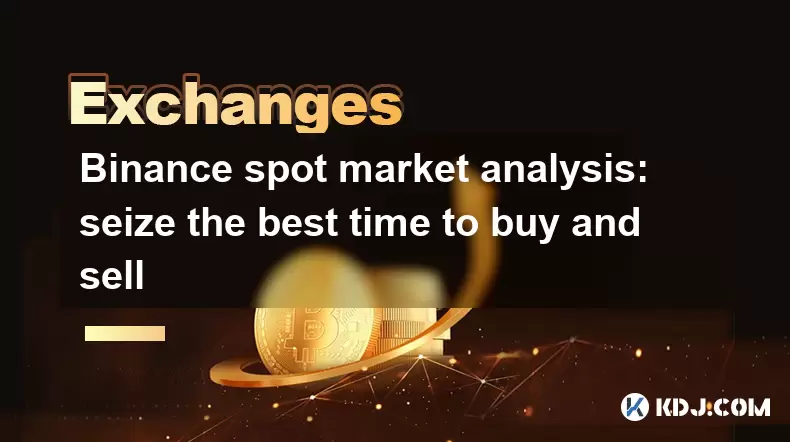
Binance spot market analysis: seize the best time to buy and sell
Jun 19,2025 at 04:56pm
Understanding the Binance Spot MarketThe Binance spot market is one of the most popular platforms for cryptocurrency trading globally. It allows users to trade digital assets at current market prices, making it essential for traders aiming to buy low and sell high. Unlike futures or margin trading, spot trading involves direct ownership of the asset aft...
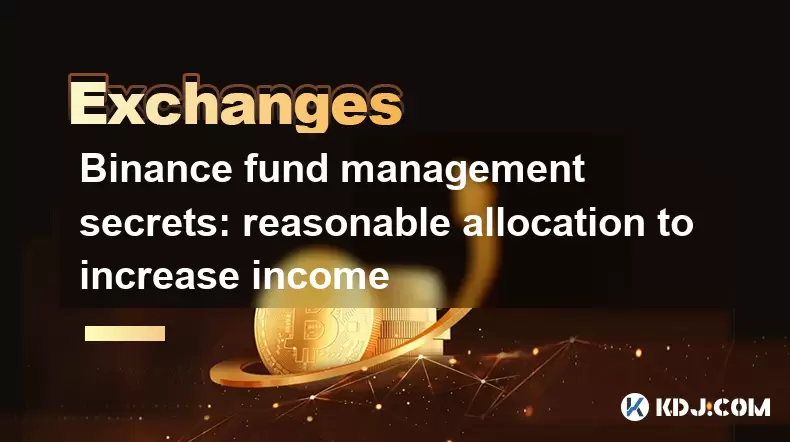
Binance fund management secrets: reasonable allocation to increase income
Jun 22,2025 at 02:29pm
Understanding Binance Fund ManagementBinance fund management involves strategic allocation of your cryptocurrency assets to optimize returns while managing risk. The key to successful fund management lies in understanding how different investment options on the Binance platform can be utilized to create a diversified portfolio. This includes spot tradin...
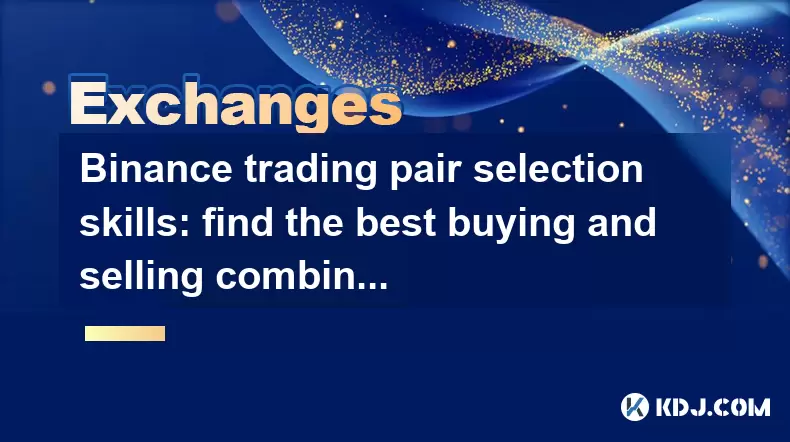
Binance trading pair selection skills: find the best buying and selling combination
Jun 23,2025 at 02:49am
Understanding the Basics of Trading Pairs on BinanceBefore diving into trading pair selection skills, it's essential to understand what a trading pair is. On Binance, a trading pair refers to two cryptocurrencies that can be traded against each other. For example, BTC/USDT means Bitcoin is being traded against Tether. Each trading pair has its own liqui...

Binance new coin mining strategy: participate in Launchpool to earn income
Jun 23,2025 at 11:56am
What is Binance Launchpool and how does it work?Binance Launchpool is a feature introduced by the world’s largest cryptocurrency exchange, Binance, to allow users to earn new tokens through staking. This platform enables users to stake their existing cryptocurrencies (such as BNB, BUSD, or other supported assets) in exchange for newly launched tokens. T...
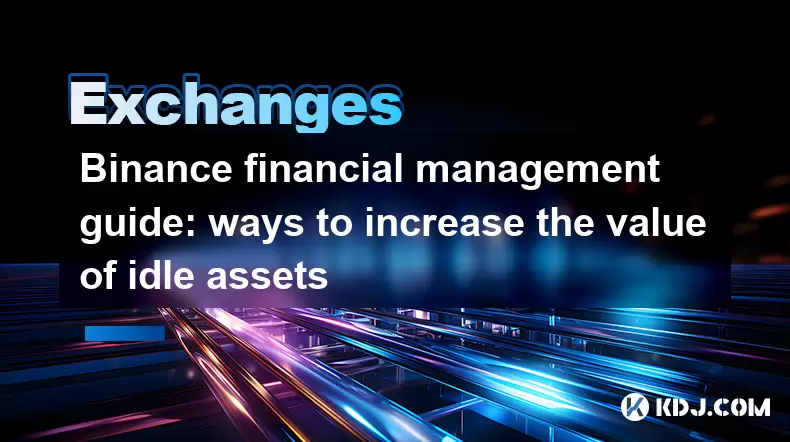
Binance financial management guide: ways to increase the value of idle assets
Jun 19,2025 at 11:22pm
Understanding Idle Assets in the Cryptocurrency SpaceIn the fast-paced world of cryptocurrency, idle assets refer to digital currencies that are not actively being used for trading, staking, or yield farming. Holding these funds in a wallet without utilizing them means missing out on potential growth opportunities. Binance, as one of the leading platfor...
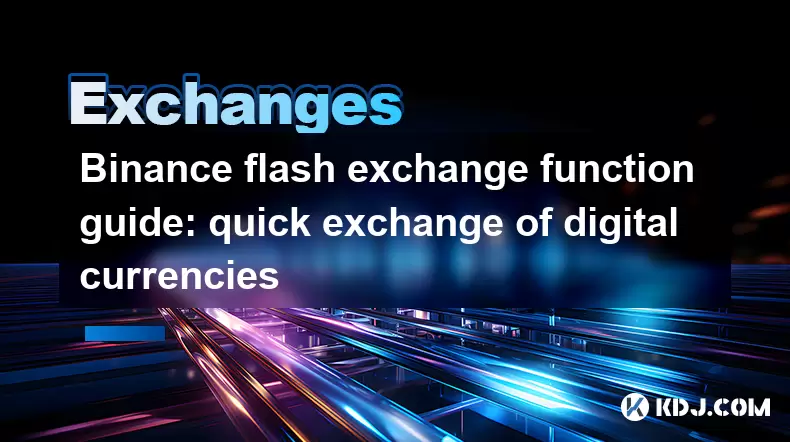
Binance flash exchange function guide: quick exchange of digital currencies
Jun 23,2025 at 12:29pm
What is the Binance Flash Exchange Function?The Binance Flash Exchange function is a powerful tool designed to allow users to instantly swap between supported cryptocurrencies without the need for placing traditional buy/sell orders. This feature simplifies the trading process by offering a direct exchange mechanism, eliminating the requirement to conve...

Binance spot market analysis: seize the best time to buy and sell
Jun 19,2025 at 04:56pm
Understanding the Binance Spot MarketThe Binance spot market is one of the most popular platforms for cryptocurrency trading globally. It allows users to trade digital assets at current market prices, making it essential for traders aiming to buy low and sell high. Unlike futures or margin trading, spot trading involves direct ownership of the asset aft...

Binance fund management secrets: reasonable allocation to increase income
Jun 22,2025 at 02:29pm
Understanding Binance Fund ManagementBinance fund management involves strategic allocation of your cryptocurrency assets to optimize returns while managing risk. The key to successful fund management lies in understanding how different investment options on the Binance platform can be utilized to create a diversified portfolio. This includes spot tradin...

Binance trading pair selection skills: find the best buying and selling combination
Jun 23,2025 at 02:49am
Understanding the Basics of Trading Pairs on BinanceBefore diving into trading pair selection skills, it's essential to understand what a trading pair is. On Binance, a trading pair refers to two cryptocurrencies that can be traded against each other. For example, BTC/USDT means Bitcoin is being traded against Tether. Each trading pair has its own liqui...

Binance new coin mining strategy: participate in Launchpool to earn income
Jun 23,2025 at 11:56am
What is Binance Launchpool and how does it work?Binance Launchpool is a feature introduced by the world’s largest cryptocurrency exchange, Binance, to allow users to earn new tokens through staking. This platform enables users to stake their existing cryptocurrencies (such as BNB, BUSD, or other supported assets) in exchange for newly launched tokens. T...

Binance financial management guide: ways to increase the value of idle assets
Jun 19,2025 at 11:22pm
Understanding Idle Assets in the Cryptocurrency SpaceIn the fast-paced world of cryptocurrency, idle assets refer to digital currencies that are not actively being used for trading, staking, or yield farming. Holding these funds in a wallet without utilizing them means missing out on potential growth opportunities. Binance, as one of the leading platfor...

Binance flash exchange function guide: quick exchange of digital currencies
Jun 23,2025 at 12:29pm
What is the Binance Flash Exchange Function?The Binance Flash Exchange function is a powerful tool designed to allow users to instantly swap between supported cryptocurrencies without the need for placing traditional buy/sell orders. This feature simplifies the trading process by offering a direct exchange mechanism, eliminating the requirement to conve...
See all articles





















